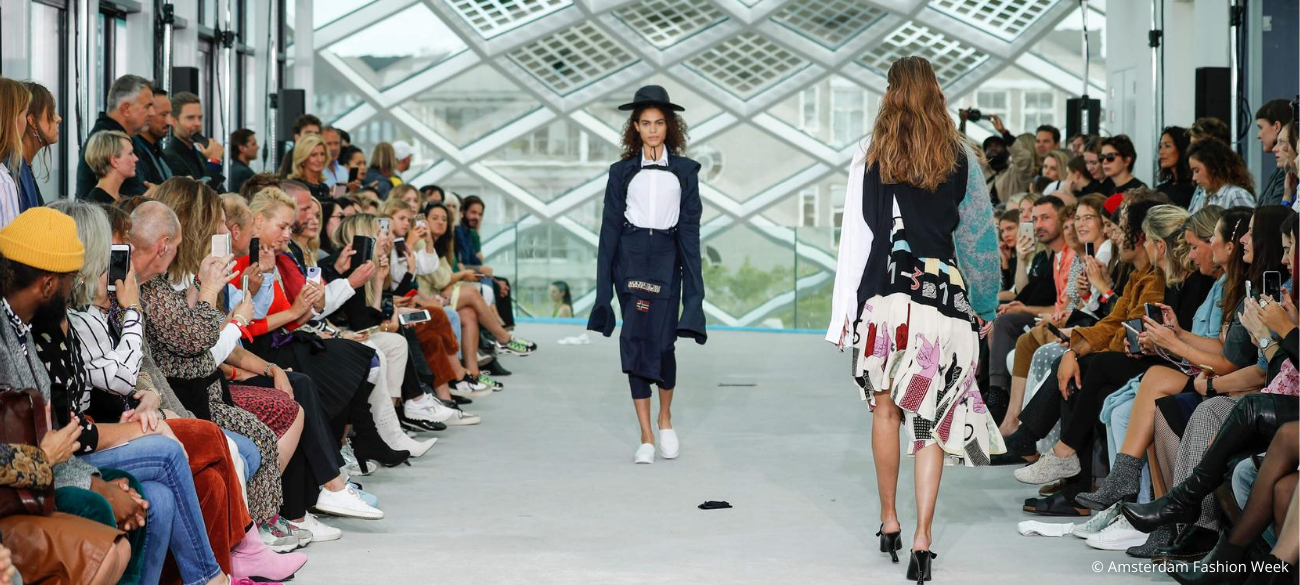EXPO Greater Amsterdam
Stelling 1
2141 SB Vijfhuizen
How upcycling is reforming fashion standards
Every year, huge piles of clothes literally go up in smoke; this is just one of the many examples illustrating that it's high time that the fashion industry is modernised and reformed. Increasing numbers of fashion designers are thankfully recognising this problem and plenty of action is being taken, often through upcycling.
A creative twist on a well-known problem
Research conducted by the Ellen MacArthur Foundation revealed that $500 billion in clothes is thrown away every year, and the items are often hardly worn.
It is now a well-known problem, which - mostly young - fashion designers are addressing through repurposing. Duran Lantink, for example: following on from his graduation project, he creates compositions of various items of designer clothing, which he unashamedly chops up. And he is just one of many; burgeoning fashion brands fully focused on remaking clothing are shooting up like mushrooms.
Luxury fashion houses are also realising that they can no longer lag behind. Maison Margiela's last Artisanal Show featured solely upcycled archive items. Creative Director John Galliano chopped up old pieces from the fashion house to create a new artistic reality. Alongside Galliano and Lantink, Ronald van der Kemp is another prominent name in the world of upcycling. By only using residue material from renowned fashion houses, he minimises waste.
'Guts like that are exactly what's needed to shake the fashion industry into life.'

A new look for an old solution
Of course, reusing clothes in this way is nothing new. It's just that decades ago, the term was unknown and unloved. Back then, it was usually housewives who - whether out of necessity or not - turned old sheets into clothes. It was a time in which sustainability was largely associated with 'back-to-nature types'. And yet brands such as From Somewhere (1997), Raeburn Design (2009) and HACKED by_ (2014) have been doing their bit to fight waste for years. Nonetheless, Lantink deserves special praise for the popularity of this craft with the public at large. He certainly caught the attention of major names including Anna Wintour and Jonathan Anderson during the final of the prestigious LVMH Prize, when he exhibited a completely cut up version of a JW Anderson jacket. Guts like that are exactly what's needed to shake the fashion industry into life.
As a result, there is also plenty going on in the lower segment. In early 2019, fast fashion chain H&M showed their willingness in this regard with their collaboration with HACKED by_, the Dutch brand of Alexander van Slobbe and Francisco van Benthum that started recycling old clothes in 2014. Amsterdam concept store X Bank recently announced a collaboration with Scotch & Soda and designer duo Schueller de Waal, which will see items left over from Scotch & Soda's SS20 collection remade into new creations.
And hence more names are gradually being added to the list of sustainable collaborations. But despite these developments, the heart of the problem lies in overproduction. As long as the term 'dead stock' is still in use, upcycling from fashion houses themselves is a solution. But whether that is enough to lead to actual reform, only time will tell.
Written by Emma Vloeimans
Share article

